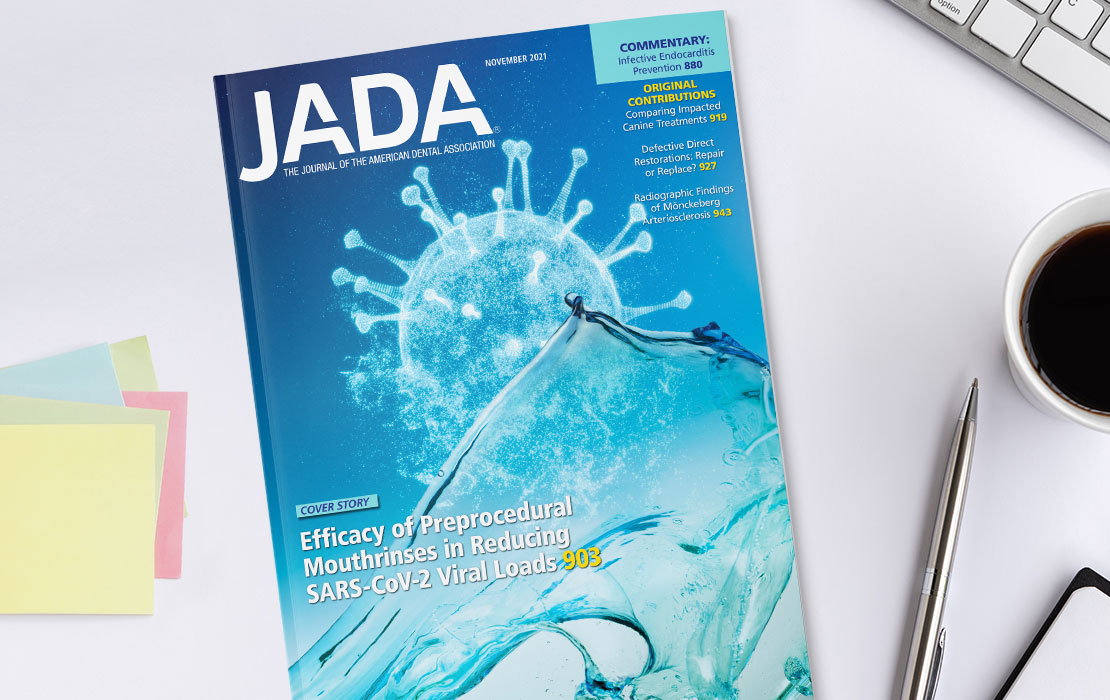November JADA finds mouthrinses reduce SARS-CoV-2 in saliva

Mouthrinses can reduce the SARS-CoV-2 viral load in saliva, according to a study published in the November issue of The Journal of the American Dental Association.
The cover story, "Estimating Salivary Carriage of Severe Acute Respiratory Syndrome Coronavirus 2 in Nonsymptomatic People and Efficacy of Mouthrinse in Reducing Viral Load: A Randomized Controlled Trial," looked at the viral load in the saliva of 201 people and detected SARS-CoV-2 in 23% of asymptomatic, 28% of presymptomatic, 99% of symptomatic and 60% of postsymptomatic participants. However, both the frequency of detection and the amount of viral load were significantly lower in asymptomatic and presymptomatic participants than symptomatic and postsymptomatic participants.
"SARS-CoV-2 can be present in the saliva of asymptomatic and presymptomatic patients. Therefore, it is important for dental professionals to exercise optimal infection control protocols," said Purnima Kumar, D.D.S., Ph.D., corresponding author and professor at the Ohio State University College of Dentistry. "Mouthrinsing for 60 seconds can reduce the salivary loads of SARS-CoV-2 for 45 minutes. Therefore, there is wisdom in using preprocedural mouthwashes for all patients."
The researchers randomly assigned symptomatic participants to use a mouthrinse containing 15 milliliters of normal saline, 1% hydrogen peroxide, 0.12% chlorhexidine gluconate or 0.5% povidone-iodine. All four reduced the SARS-CoV-2 viral load in saliva, with a median reduction of 61%-89% at 15 minutes after rinsing and 70%-97% at 45 minutes. Neither the 15-minute reduction in viral load nor the persistence of reduction at 45 minutes differed among the rinses, but the extent of reduction correlated significantly with participants’ initial viral load.
Other articles in the November issue of JADA discuss impacted canine treatments, whether to repair or replace defective direct restorations, and radiographic findings of Mönckeberg arteriosclerosis.
Every month, JADA articles are published online at JADA.ADA.org in advance of the print publication.



